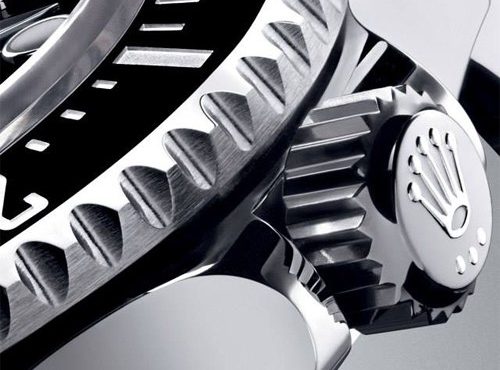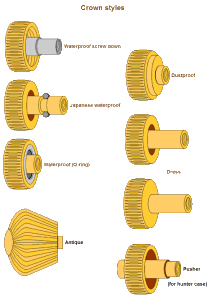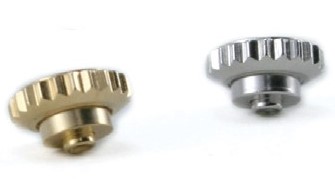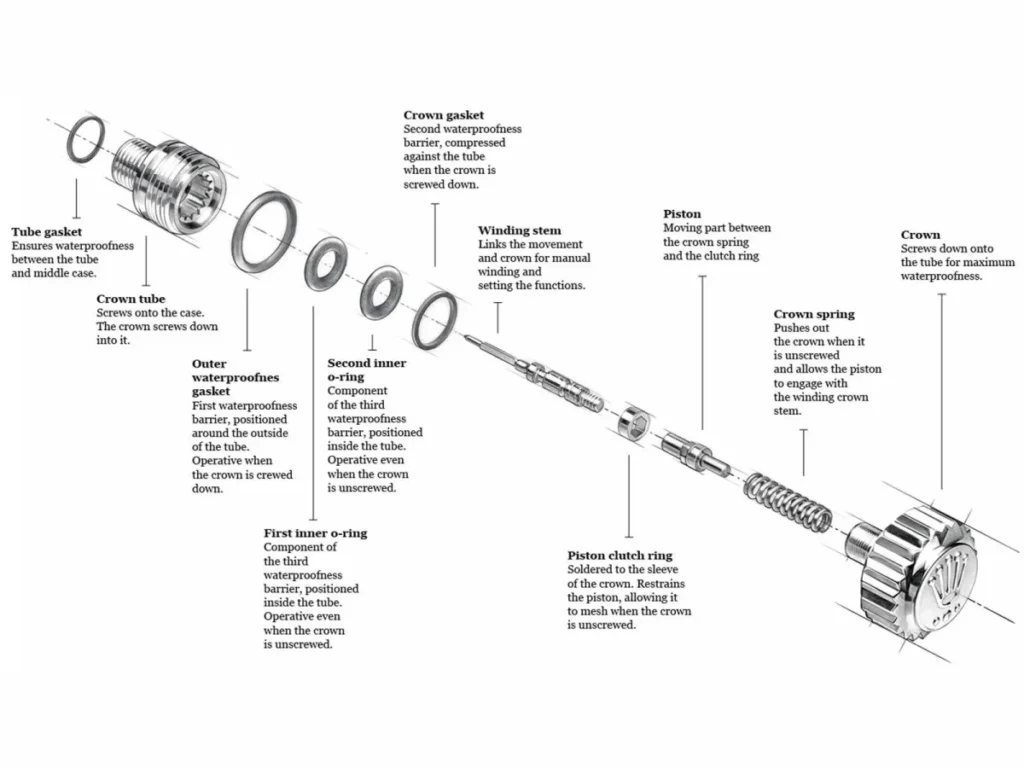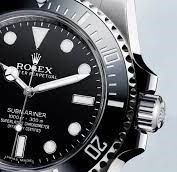The crown is the part of the watch with which you set the time of the watch and also manually wind the watch. This is the most important aspect of the crown and why it can be found on almost all timepieces. The crown has traditionally been positioned at 3 o’clock, but it can also be at the 4 o’clock position
Oftentimes, the crown can also be used for hand-winding the movement if it is an automatic or manual movement. The crown can in some cases also be used for setting additional functions such as the date, moon phase, or the day functions and many more functions.
The crown of a watch is attached to a stem that goes to the movement.
Why is it called a crown?
As it turns out, the term has royal inspiration, as the round, fluted shape of the winding knob reminded many of the crowns of European royalty, and the name “crown” stuck.
Crowns come in all kinds of different designs. Some are screw-down, others are recessed, some are waterproof.
Different manufacturers use different crown designs. Some manufacturers have additional gaskets and safety measures to make them more robust and secure. In general, more affordable watches have less advanced and complicated constructions.
Rolex Crowns
Functions of a Crown
- Wind your watch
- Set the time
- Adjust other settings like day/date, moon phases
- Start/stop the stopwatch timer
What is the hacking function of a crown?
When pulling out the crown to its last position, the movement will hack and stop. Not all watches have this feature, and in general, the cheapest mechanical watches do not incorporate a hacking feature. But it is still a rather convenient function that allows you to set the correct time down to the second when you push in the crown again and the movement starts.
Types of watch crowns
- Screw-down crown
- Recessed crown
- Regular (push-pull) crown
- Screw-down crown: A screw-down crown is, as the name suggests, a crown that screws down into the case by using the same principle of a bolt and a nut. The purpose of a screw-down is to prevent water from entering the crown tube and the movement. This is why you usually find screw-down crowns on dive watches, but also other types of watches where the water resistance is an important aspect. A screw-down crown also protects the case from dust.
- Recessed crown: A recessed crown is a crown that is naturally recessed into the movement. This usually creates a seamless and ”hidden” look which keeps the crown out of the way and keeps it from harming the overall look and design of the watch.
- Regular (push-pull) crown: This is perhaps the most common type of crown which is just there to serve the purpose of operating the functions without anything special about it. This type of crown is the simplest, it is used to wind and set the watch.
What is a crown guard?
The purpose of crown guards on a watch is to protect the crown. The crown guards protrude from the case and prevent the crown from receiving shocks and bangs. When the crown is subject to hard knocks, it may break and the function may be compromised. The water resistance of the watch may also be compromised. Therefore, the crown guards work as a shield to protect the crown.
Crown guards are normally found on sports watches that have a higher risk of being subject to shocks and bangs. Because crown guards mean a larger size, they are generally not found on dress watches since they do not align well with the design of dress watches, and are not necessarily needed.
CHARLEY PHOTO OF THE WEEK: Charley works up an appetite fixing watches, which is especially hard without thumbs, so she needs her protein. Her favorite is peanut butter after a walk around the block.


